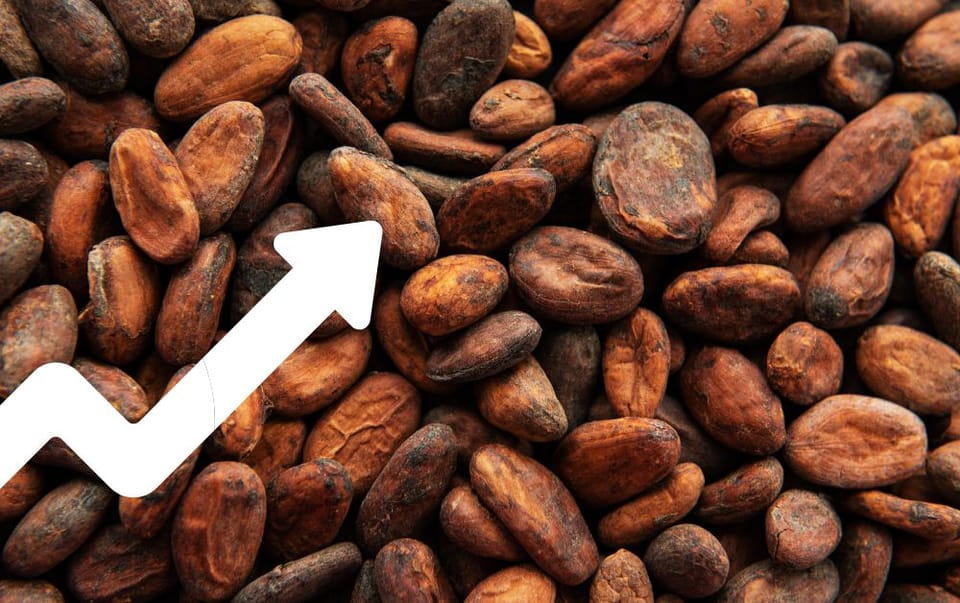Cocoa Frenzy, US Crop Trends, and Sugar's Sweet Outlook

Sign up for Ag Commodities Focus: Stay ahead of the curve on ag commodities trends.
Here's a recap of the top stories in the ag market last week.
Managed Money's Big Bet on Bitter Beans
Cocoa prices have been skyrocketing due to a "perfect storm" of poor harvests and a record $8.7 billion bet by hedge funds, as reported by the Financial Times. This has driven cocoa prices to all-time highs. While the initial surge was caused by adverse weather and disease in cocoa-producing regions, the influx of hedge fund investments has intensified the price spike.
Cocoa (March) futures have rallied 120% over the last year, but pulled back by 4% last Friday. This correction, driven by concerns that the elevated prices might dampen demand, indicates a market adjustment following a period of being overbought.
Shifting Crops, Lower Prices, and Tighter Margins for US Farmers
In its latest report on grains and oilseeds, the USDA's projects shifts in US crop acreage:
Corn: Acreage dips from 94.6 million to 91 million, with a projected 2% smaller crop. Season-average farm price is expected to fall 40 cents to $4.40 per bushel.
Soybeans: Acreage expands to 87.5 million, driven by stronger domestic demand for biofuel. Production is expected to jump 8% to 4.5 billion bushels, but the season-average farm price could drop $1.45 to $11.20 per bushel.
Wheat: Acreage shrinks to 47 million, but production is forecast to rise 5% to 1.9 billion bushels, potentially reaching a five-year high. The season-average farm price is projected to be $6 per bushel, the lowest since 2020/2021.
Farmers are likely shifting towards soybeans due to better domestic demand prospects compared to corn and wheat facing global supply pressures. Lower prices across all three crops are expected due to various factors, including global supply trends and higher input costs. The USDA also expects tighter margins as input prices remain high while commodity prices normalize, potentially impacting farm profitability.
Sweet Deal
Raw sugar prices are expected to jump nearly 20% in 2024 due to a projected global deficit, according to a Reuters poll. Sugar prices are projected to end the year at 24.5 cents per lb, marking a 19% rise from last year's end, as per the median forecast of the poll. Lower production in India combined with Brazil's focus on sugar over biofuel are key factors. Brazil's cane crop may shrink slightly, but the production mix favoring sugar is predicted to increase output. While Brazil remains the key supplier, concerns linger about its ability to fill the global gap. Overall, this points to potentially higher sugar prices for consumers in the rest of the year.
What else: Last week, CBOT prices faced downward trends, influenced by expected high stock levels and abundant supplies from the Black Sea region, compounded by China's holiday-induced market inactivity. The USDA's forecast suggests a slight dip in total acreage, with a notable increase in soybeans and a decrease in corn. Managed money funds showed a trend of net selling, with a focus on net short positions. Challenges in securing war risk insurance for Red Sea shipping could alter routes and costs. Traders are closely monitoring South American crop sizes and U.S. crop profitability, with future planting intentions and crop insurance prices being key factors.